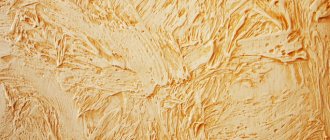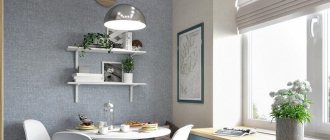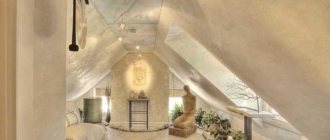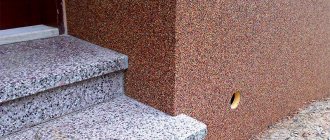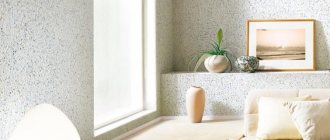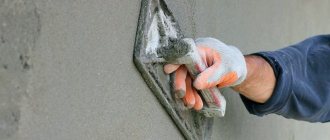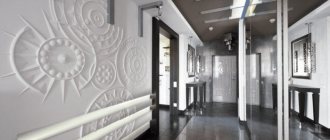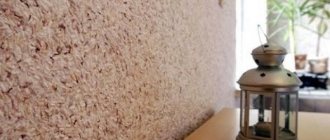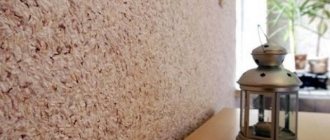A lot of techniques and materials are used in decorating walls, among which the most effective is Venetian plaster. It is the marble flour in its composition that creates a magnificent picture on the surface of the walls.
They knew about the Venetian back in Ancient Rome. Nowadays, it has acquired slightly different features - different shades have appeared, methods of use have improved. Let's talk about this in more detail.
Compound
Venetian plaster consists of the remaining waste after processing marble or materials such as malachite, granite, quartz, etc. The substance of such plaster is particles of different sizes, and the smaller they are, the smoother the surface will be.
In parallel with the raw materials, a special finishing agent and protective layer is purchased. Beeswax is most often used as such; cheaper analogues are also acceptable. Coating with beeswax will create a stunning gloss effect.
What can be depicted on the wall
Venetian plaster is a suitable material for paintings and graffiti. They draw whatever their imagination allows. Considering the specifics of the material and the preference for the classical style of premises, the most common designs are intricate patterns made in pastel colors.
With decorative patterns
The plaster is also painted with other themes. Starting from the concept of “pattern,” oriental patterns such as hieroglyphs, ligature, etc. are depicted. Such decoration is appropriate if the overall decor of the apartment corresponds to an oriental theme.
Technology
To get the expected effect, you need to approach the process competently. Marble plaster is a fairly expensive material, which differs in some subtleties and nuances of use. In this case, the services of a master are not cheap, so many people prefer to do the work themselves. But if you do everything according to the rules, you can create a finish that is indistinguishable from the work of a professional.
A little history
If, upon entering the room, it is impossible to take your eyes off the walls decorated with natural stone, we can safely say that Venetian plaster was used to cover the surfaces. This material, so in demand today, appeared in Ancient Rome. From there they came to us with the composition of the coating and the method of applying it.
Stone, especially marble, has long been one of the most popular materials for construction work. Our ancestors developed a technology for producing a mixture with which it was possible to improve the homes of wealthy citizens and make them luxurious, corresponding to their status. The Venetian was made from the waste left over from marble processing. After mixing these small particles with slaked lime (binder), an elastic composition was obtained, with which it became possible to decorate the bases, creating the illusion of finishing with natural stone. Despite the complexity of the work performed, the result was amazing. The walls and ceilings lined with seamless coating looked very presentable. To increase the service life of the cladding and resistance to impacts, it was treated with wax and finished polished.
Developed by the ancient Romans, the technology was perfected during the Renaissance. In addition to marble, craftsmen began to use particles of other natural stones, including precious ones. Venetian plaster was used to decorate houses and churches; it was used to create patterns and frescoes that became real works of art.
Today, the Venetian recipe has changed a little, thanks to the emergence of new materials. Polymer resins began to be used as a binder. It should be noted that they not only have excellent performance characteristics, but are also completely harmless to humans. The plaster is tinted in bulk, so a completely finished composition is applied to the bases, which subsequently does not need to be further decorated.
Coating technology has remained virtually unchanged over the years. Facing work consists of several stages: applying several layers of plaster, distributing the composition and artistic formation of the decor, grouting the surface and finishing with protective agents. The result is either a glossy or textured surface.
Important! If desired, you can make the Venetian yourself by purchasing slaked lime, fine marble and pigments. However, compositions produced in factories are superior to homemade mixtures in terms of performance and decorative properties due to the presence of additional components.
Tools and materials
To decorate the interior with Venetian plaster, you will need:
- a primer containing quartz filler (to prepare the surface);
- water for the solution to set;
- plaster mixture;
- colors to create different shades;
- fine-grained sandpaper for sanding and grouting;
- paste or liquid wax to protect against dirt and dust, as well as to obtain a glossy effect;
- roller or spatula for primer;
- trowel for distributing the mixture;
- rubber spatula for wax;
- rags for wiping tools, floors, etc.;
- containers for liquids and mixtures.
How to repaint it a different color?
The main color of the plaster is white. It is corrected by adding a special concentrated dye to the decorative mixture. Thanks to this, any shade can be obtained, but you can see it after the plaster layer has completely dried.
Changing the shade of Venetian plaster in the interior is problematic because it is coated with wax. When repainting it, you should follow the renovation instructions: first you will have to remove the applied plaster layer, and then apply a new one of a different shade. You can restore the coating to its original shine by applying and polishing an additional layer of wax, but you will not be able to change the color or pattern in this way.
Venetian plaster green
Application of Venetian plaster
Preparatory processes will depend on the type and composition of the panel. In the case of brickwork, you need to pre-treat it - level it and sand it thoroughly. If you plan to decorate a plasterboard structure, you can get by with just starting putty.
Make sure that the surface on which the marble base is laid is as smooth and even as possible, otherwise imperfections will appear through the coating.
The next stage is primer. It must contain quartz. It is necessary to prepare a 20% solution from water and primer in a separate container, and then apply it to the wall using a roller or spatula. Allow the surface to dry thoroughly.
Next is the turn of the mixture itself. Dilute the mixture with water according to the proportions indicated on the package. To give the surfaces any shade, it is at this moment that you need to add color. When choosing a color, remember that marble is a natural material, so give preference to more natural tones.
Application should be done in 4 steps:
- The base must be solid and even, applied using a trowel or roller. The first layer must dry completely. Typically this takes about 8 hours.
- The texture is applied with loose strokes, then smoothed. This layer must also dry.
- The result depends on the quality of the final layer. At this stage you need to be very careful. As you know, marble has streaks and veins. Therefore, to achieve the desired effect, use a solution of the same color, but different (preferably two) shades. It is spread over surfaces with a trowel. It is important not to spoil the decor. The third layer should be applied in strokes or wavy movements, but not all over. Wait until everything dries (at least a day). When there is not a single wet spot, use fine sandpaper to sand out all the imperfections.
- The final stage is the application of wax, which will give the Venetian a gloss. It is applied in a continuous layer using a rubber spatula, then rubbed with a woolen cloth. It is enough to do this once.
Composition of plaster and its properties
The composition of the Venetian is quite simple:
- mineral dust;
- slaked lime (can be replaced with modern polymers of synthetic origin);
- dyes (can be natural or synthetic);
- water (latex) emulsion;
- gypsum;
- wax.
Sometimes other components may be added to the main composition to achieve certain characteristics.
The history of Venetian plaster shows that over the years builders have tried to modernize the composition, but the classic set of components is still considered optimal.
The peculiarity of the composition is its transparency, which is why it is important to apply it only to a previously leveled surface. Any, even the smallest defects will be visible. In order not to spoil the aesthetic appeal, you need to cover the surface with putty, plaster or plasterboard before applying the composition.
Features of Venetian plaster
Like any other material, Venetian plaster has its pros and cons. The disadvantages include a fairly high price and difficulties in the process of performing the work. But all this is offset by positive qualities:
- safety - this plaster has high environmental performance. It contains exclusively natural ingredients, so the Venetian does not cause allergies and is not toxic;
- durability – the service life of the coating is more than 15 years. Over time, only the wax layer can be renewed;
- aesthetics - the magnificent effect that marble powder creates is wonderful in interior design. Due to its multi-layer nature, plaster manifests itself in a special way and enhances any interior.
DIY interior wall decoration
There are no problems for masters in how to make Venetian plaster with your own hands and then apply it to prepared walls; sometimes even a beginner can cope with this task.
But you should take into account some of the nuances of making this type of decorative coating yourself:
- the use of polymer and synthetic binder components is quite justified, since they impart higher performance characteristics to such a coating;
- Natural, most often mineral, dyes can also be replaced with artificial substances;
- The constant component remains marble or other chips, which can be purchased in many stone processing shops.
Venetian plaster blue
But the real apologists of this plastering art believe that the real “Venetian” is an exclusively natural composition. Only in this case, in their opinion, can one truly feel and see all the beauty of the stone.
For interior wall decoration, modern industry offers ready-made compositions in containers from 5 to 25 kg, which before starting work should only be thoroughly mixed and, trusting your artistic instinct, get to work.
In this video they will tell you how to apply Venetian plaster with your own hands and introduce you to its features.
Venetian plaster in the interior
Venetian, unlike marble itself, can only be used for interior decoration. However, such plaster cannot be used in bathrooms and other rooms with high humidity.
Marble chips enhance any interior; they look great in the living room, hallway or bedroom. In terms of style, it is very important that the decorative panel does not conceptually contradict the overall design. This type of finish can often be found not only in residential premises, but also in the design of hotels, offices, and cafes.
When decorating the interior, Venetian plaster, in addition to wall decoration, designers like to use to decorate individual parts of the room - columns, cornices and others. It is advisable that an object with such a coating be exposed to artificial or natural lighting to create the effect of a charming play of light. You can appreciate such decor only by seeing all this beauty with your own eyes.
Types of Venetian
There are several varieties of Venetian, differing in appearance, composition and method of application.
Craquelure
It has an antique effect and features intricate patterns with cracks. This decorative technique is achieved through a special craquelure varnish, which, when dried, tightens the plaster layer and forms fractures.
Carrara marble
To achieve an imitation of Carrara marble, several layers of plaster are applied, differing from each other by half a tone. The result is a rather expensive finish that plays with a variety of tints.
The photo shows walls decorated with Venetian plaster with the effect of Carrara marble.
Veneto
It has a semi-matte surface with the effect of polished marble. This design option will undoubtedly give the room nobility and aristocracy.
Marseille wax
This unusual visual effect is obtained due to the addition of wax, which not only transforms the appearance of the entire coating and adds additional chic to it, but also improves its technical characteristics, for example, this finish can be used in rooms with high humidity levels.
Trevignano
Thanks to layers of different colors, this surface has iridescence and a special play of light. Using a polymer mixture and a certain application technique, an imitation resembling the travertine rock is obtained.
The photo shows Venetian Trevignano plaster on the wall in the dining room.
Marbello
This texture looks very elegant and expensive; in appearance it looks like velvet with streaks of gloss. Marbello can also change shade depending on the lighting angle.
Encausto
Dark matte surface that resembles granite. Using a finishing wax coating can further enhance this effect.
Venetian plaster in the photo
Disadvantages and advantages
Let's start unconventionally - with the shortcomings.
There are two significant ones:
- high price;
- technological complexity.
The high price of materials significantly narrows the scope of application; these types of external wall decoration are used only in expensive, prestigious premises.
The estimated cost of plastering is much higher than average
As for manufacturability, coating requires an increased amount of time; the process consists of several separate very important steps. The process is creative, not every plasterer can perform such work.
Advantages of Venetian plaster
The Venetian mixture has a very important advantage - an environmentally friendly composition, which is based on natural and safe ingredients
- Long service life. Manufacturers guarantee for at least 15 years; in practice, coatings do not change their original properties for decades. But under one condition - high-quality materials were used and the recommended technology was fully followed.
- Wear resistance. The use of modern polymer materials in plaster significantly increases the resistance of the coating to scratches, and this is the most common mechanical damage to walls.
- Excellent design characteristics. The appearance of decorative plaster allows you to create unique interiors; rooms with such wall decoration significantly increase the status of their owners.
A waxed wall is not exposed to water and temperature changes
Venetian plaster can be repaired and restored
Art concrete as a new direction
New directions now exist everywhere and finishing work in this case is no exception.
The essence of this option is that the surfaces of the room are treated in such a way that different shades are formed, the most common of which are light and dark gray (in this case, gradual transitions are often observed).
This option is best suited for kitchens in which other interior elements will be quite bright.
It is also important to note that this option will look good in a medium-sized kitchen.
Disadvantages of using coating
Despite the large number of advantages, experts draw the attention of apartment and private house owners to a number of disadvantages:
- Quite a high cost of finishing material.
- Ordinary Venetian plaster (without an acrylic layer) does not easily tolerate wet cleaning and surface treatment with detergents.
- There are many requirements for the preliminary finishing of the underlying substrate.
- To apply a high-quality coating you will need certain dexterity and artistic skills.
In most cases, finishing walls with Venetian plaster requires the help of specialists who can give the surface the proper shine, depth of color and unique ornament.
Preliminary surface preparation
The coating must be applied only to a perfectly flat surface. Plaster, stone, brickwork, and ordinary plaster are perfect as a suitable base for the Venetian. Do not finish over wooden or metal surfaces. Step-by-step preparation of the base:
- The surface of the walls (columns, building niches, other parts in the interior) is thoroughly cleaned of dust and dirt, and remnants of removed material.
- All protrusions, irregularities, and defects are removed using a chisel or spatula.
- The depressions are puttied to give the walls a perfect alignment.
- All “weak” areas of the wall are covered with a reinforcing mesh, which will ensure reliable fastening of the plaster to the underlying surface.
- Several layers of putty are applied over the mesh, which, after drying, is sanded with sandpaper.
- The master’s further task is to alternate priming and puttying the walls (traditionally 2-3 treatments are used).
Note!
Choosing a heated floor: water, infrared, film, rod, cable, resistive, self-regulating, pros and cons + instructions
Kitchen renovation in Khrushchev (155 real photos): new designs, layout options, furniture placement and zoning of a small kitchen
Decorative plaster: types for interior wall decoration, design photos, instructions for application and combination in the interior
Preparing the foundation is a long process, sometimes taking more than one day. Make sure that each coat of primer is completely dry before applying the next coat.
